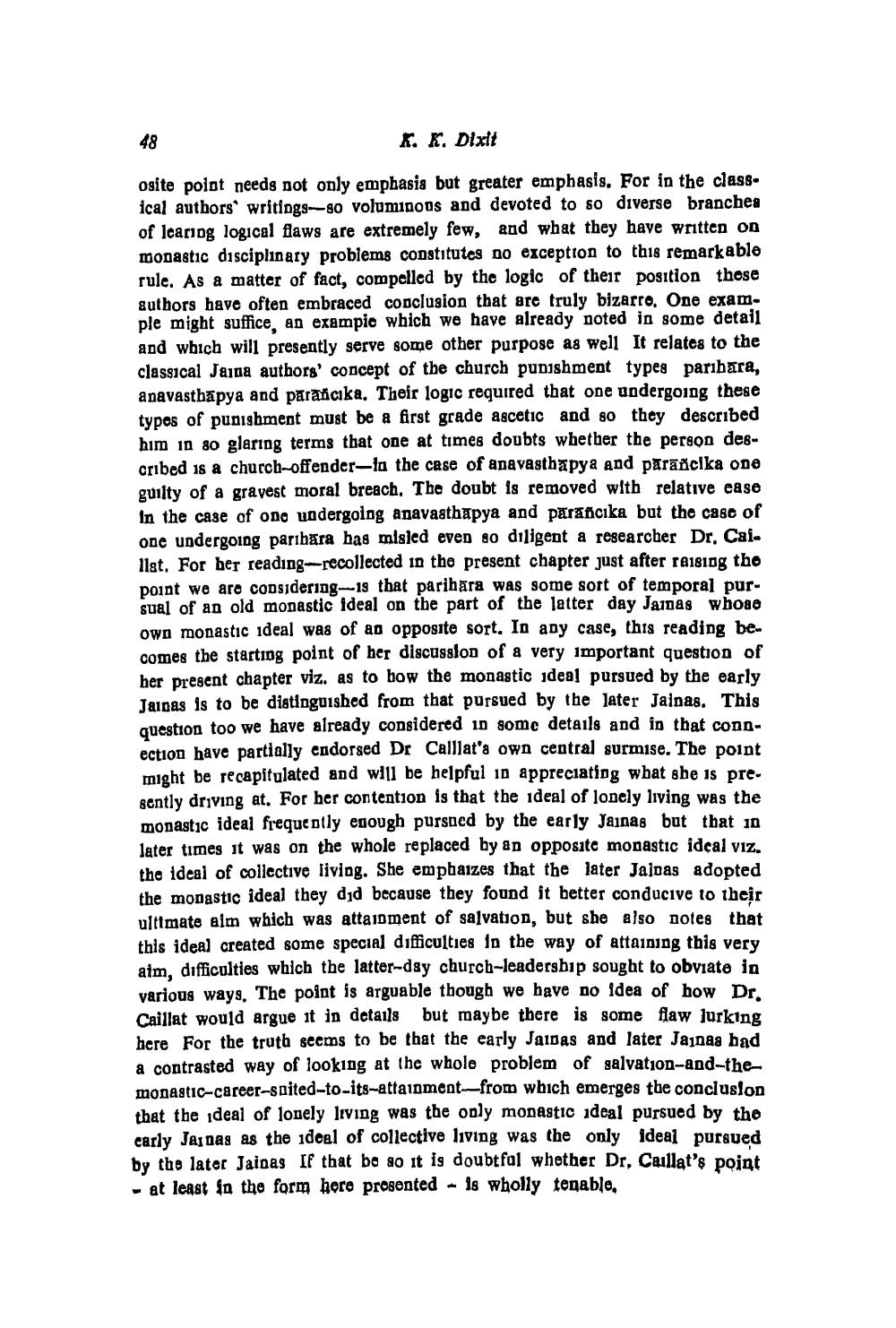________________
K. K. Dixit
osite polot needs not only emphasis but greater emphasis. For in the class. ical authors writings-80 voluminoos and devoted to so diverse branchea of learnog logical flaws are extremely few, and what they have written on monastic disciplinary problems constitutes no exception to this remarkable rule. As a matter of fact, compelled by the logic of their position these authors have often embraced conclusion that are truly bizarro, One exam. ple might suffice, an exampic which we have already noted in some detail and which will presently serve some other purpose as well It relates to the classical Jajna authors' concept of the church punishment types paribara, anavasthāpya and parancika. Their logic required that one undergoing these types of punishment must be a first grade ascetic and so they described him in so glaring terms that one at times doubts whether the person described is a church-offender-lo the case of anavasthapya and pārārcika one guilty of a grayest moral breach. The doubt is removed with relative ease In the case of one undergoing anavaathapya and parañcika but the case of one undergoing parihara has misled even so diligent a researcher Dr, Cai. Ilgt. For her reading-recollected in the present chapter just after r018ing the point we are considering-19 that parihara was some sort of temporal pur. sual of an old monastic ideal on the part of the latter day Jainas whoae own monastic ideal was of an opposite sort. In any case, this reading becomes the starting point of her discussion of a very important question of her present chapter viz. as to how the monastic ideal pursued by the early Jalpas is to be distinguished from that pursued by the later Jalnas. This question too we have already considered in some details and in that connection have partially endorsed Dr Calllat's own central surmise. The point might be recapitulated and will be helpful in appreciating what she is presently driving at. For her contention is that the ideal of lonely living was the monastic ideal frequently enough pursued by the early Jainag but that in later times it was on the whole replaced by an opposite monastic idcal viz. the ideal of collective living. She emphaizes that the later Jaloas adopted the monastic ideal they did because they found it better conducive to their ultimate aim which was attainment of salvation, but she also notes that this ideal created some special difficulties in the way of attaining this very aim, difficulties which the latter-day church-leadership sought to obviate in various ways. The point is arguable though we have no idea of how Dr. Caillat would argue it in details but maybe there is some flaw lurking here For the truth seems to be that the early Jaidas and later Jajnaa had a contrasted way of looking at the whole problem of salvation-and-themonastic-career-snited-to-its-attainment--from which emerges the concluslon that the ideal of lonely living was the only monastic ideal pursued by the carly Jaj nag as the ideal of collective living was the only ideal pursued by the later Jainas If that be so it is doubtfal whether Dr, Caillat's point - at least in the form here prosented - 18 wholly tenable,




